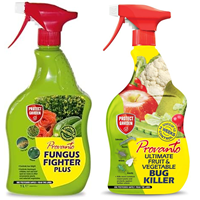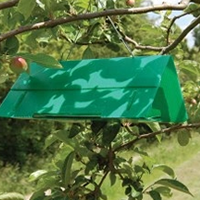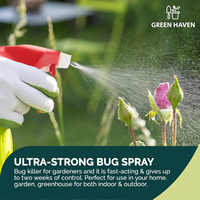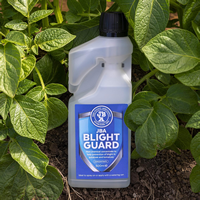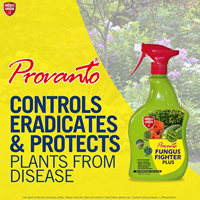Asplenium nidus - Birds Nest Fern
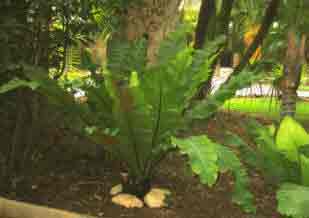
The Plant: Broad, bright-green leaf blades with a central black midrib. The leaves on the Bird's Nest Fern have a wavy edge, and, as they mature, extend to a metre or more in length, although growth can be restricted by limiting pot size.
When the Bird's Nest Fern is seen growing in its native habitat it is an amazing sight - sometimes nestling in the crotch of tree branches or somehow clinging to the trunk, and often lined up as small ferns along moss clad horizontal branches.
Originating in SE Asia, where it is happy growing on the ground - or in little nooks and crevices on trees, surviving by collecting water and organic matter in the base of its rosette of leaves. In natural habitat they can grow to 1 metre across, forming what gives it the common name of Birds Nest Fern. Together with which it has a central area of brown mossy appearance which resembles the nests of some tropical birds. A spectacular sight.
Hard to replicate any of this conditions indoors, bit this Asplenium makes a good houseplant nonetheless. Simply need to modify things a little. Growing it in a pot for instance! If it can grow in or on the ground, then a pot presents no problems.
Care of Bird's Nest Fern - Asplenium nidus.
Its needs: Good light but no direct sun. Just because it is a fern, does not confine it to a life of gloomy darkness. This one definitely prefers the light Free circulation of air but not in draught. Free-draining, open, organic, potting mix, which should not be allowed to dry out. Warmth and humidity required for healthy plant.
Application of dilute fertilizer or special fern food every two weeks. Mist-spray in hot dry conditions. Water can also be poured into the central leaf rosette. Avoid placing your Asplenium nidus where leaves can be damaged by passing people or animals. Susceptible to scale and mealy bug.
Comprehensive Guide to Caring for Bird's Nest Fern - Asplenium nidus
Bird's Nest Fern, scientifically known as Asplenium nidus, is a stunning tropical fern that can be a beautiful addition to any indoor or outdoor space. Known for its lush green foliage and unique nest-shaped appearance, this fern requires specific care to thrive. In this comprehensive guide, we will cover the fundamental aspects of setting up optimal conditions and maintaining the long-term health of your Bird's Nest Fern.
Growing Environment:Bird's Nest Fern thrives in warm, humid environments that mimic its natural habitat. Here are the key factors to consider when creating an ideal growing environment for your fern:
- Light: Bird's Nest Fern prefers bright but indirect light. It thrives in areas with filtered light or partial shade. Direct sunlight can scorch its delicate fronds, while low light conditions may result in stunted growth. Place your fern near a north or east-facing window, or use sheer curtains to filter the sunlight.
- Water: Adequate moisture is crucial for the well-being of your Bird's Nest Fern. Keep the soil consistently moist but avoid waterlogging or allowing it to dry out completely. Water your fern when the top inch of the soil feels slightly dry. Mist the leaves regularly to maintain humidity, especially during dry seasons or in air-conditioned spaces.
- Soil: Choose a well-draining potting mix that retains moisture without becoming waterlogged. A mixture of peat moss, perlite, and rich organic matter like compost or leaf mold works well. Avoid heavy clay-based soils that can cause waterlogging and root rot.
- Temperature and Humidity: Bird's Nest Fern thrives in temperatures between 60°F to 75°F (15°C to 24°C). It prefers high humidity levels of around 50% to 70%. If the air in your home is dry, consider using a humidifier or place the fern on a tray filled with water and pebbles to increase humidity.
Unique Features:
Bird's Nest Fern possesses several unique features that distinguish it from other fern species:
- Nest-like Appearance: The fronds of Bird's Nest Fern unfurl from a central rosette, resembling a bird's nest. This unique growth pattern adds an interesting visual element to your indoor or outdoor space.
- Large Fronds: The fronds of Bird's Nest Fern can grow up to 4 feet (1.2 meters) in length, making it an eye-catching focal point in any room.
- Air Purification: Like many ferns, Bird's Nest Fern acts as a natural air purifier, removing toxins such as formaldehyde and xylene from the air, promoting a healthier indoor environment.
To ensure the long-term health and vitality of your Bird's Nest Fern, follow these maintenance practices:
- Fertilization: Feed your fern with a balanced liquid fertilizer diluted to half strength every two to four weeks during the growing season (spring and summer). Reduce fertilization to once a month during the dormant period (fall and winter).
- Pruning: Remove any yellowed or damaged fronds regularly to promote new growth and maintain the fern's aesthetic appeal. Use clean, sharp pruners to make clean cuts, avoiding tearing the fronds.
- Pest Control: Bird's Nest Fern is relatively pest-resistant, but occasional pests like mealybugs, scale insects, or spider mites may infest it. Remove pests by gently washing the leaves with a mixture of mild soap and water or use a neem oil-based insecticide spray. Regularly inspect your fern for signs of pests to catch infestations early.
Disease and Problem Solutions:
While Bird's Nest Fern is generally resilient, it can face a few issues. Here are some common problems and their solutions:
- Root Rot: Overwatering or poor drainage can lead to root rot. Ensure your fern's pot has drainage holes and avoid overwatering. If root rot occurs, trim affected roots, repot the fern in fresh soil, and adjust watering practices.
- Leaf Browning or Tip Burn: This can be caused by too much direct sunlight or low humidity levels. Move your fern to a shadier spot or increase humidity to prevent leaf browning.
- Fungal Infections: Excessive moisture or poor air circulation can lead to fungal infections. Ensure proper watering practices, avoid overhead watering, and improve air circulation to prevent fungal growth. Use a fungicide if necessary.
Remember, each plant has its unique needs. Observing your Bird's Nest Fern closely will help you understand its specific requirements and provide the care it needs. With the right conditions and regular maintenance, your Bird's Nest Fern will thrive and bring a touch of tropical beauty to your space for years to come.
Asplenium nidus - resembles a small banana plant!
Good for: Makes a showy, unusual indoor plant, a stand-alone
feature due to leaf length and strong leaf colour.
Problems with Asplenium nidus
Scale insects are easy to find along the main central vein - but on the underside of the leaf.
Propagation of Birds Nest Fern
New stock is confined to the sowing of ripe spores and takes several months in a propagator for first signs of slow growth.
Propagating Bird's Nest Fern - A Detailed Guide
Bird's Nest Fern (Asplenium nidus) can be propagated via three methods: spores, division, and rooting stolons. Here are step-by-step instructions for each method, along with tips to ensure your new plants thrive.
Propagation from Spores:- Harvesting Spores: Look for mature fronds with brown, ripe spore patches on their undersides. Cut these fronds off and place them spore-side down on a piece of paper. Let them dry for a few days until the spores fall onto the paper.
- Preparing the Growing Medium: Fill a shallow container with a sterile seed-starting mix or a blend of 50% sphagnum moss and 50% perlite. Moisten the mix but avoid waterlogging it.
- Sowing Spores: Sprinkle the harvested spores evenly over the surface of the moist growing medium. Do not cover them with soil as they need light to germinate.
- Germination: Cover the container with a clear plastic bag to create a humid environment and place it in a location with bright, indirect light. Keep the soil lightly moist but not soggy. Germination can take several weeks to a few months.
- Transplanting: Once the young ferns have developed a few leaves, carefully transplant them into individual pots filled with a well-draining potting mix.
- Choosing the Plant: Select a mature Bird's Nest Fern that has multiple crowns.
- Division: Carefully remove the fern from its pot and gently separate the crowns, ensuring each division has plenty of roots attached.
- Planting: Plant each division into a separate pot filled with a well-draining potting mix. Water thoroughly after planting.
- Identifying Stolons: Stolons are long, thin stems that grow out from the base of the plant. Look for stolons that have small plantlets growing on them.
- Cutting Stolons: Using a clean, sharp tool, cut the stolon just below a plantlet.
- Planting: Place the cut end of the stolon into a pot filled with moist, well-draining potting mix. The plantlet should sit on top of the soil.
For all propagation methods, keep the new plants in a warm, humid environment with bright, indirect light. Water regularly to keep the soil consistently moist but not waterlogged. A balanced liquid fertilizer can be introduced a few weeks after propagation to support healthy growth.
Tips for Success:- Patience is Key: Ferns are slow growers, especially from spores, so patience is essential.
- Maintain Humidity: Bird's Nest Ferns thrive in high humidity, which is vital for successful propagation. Mist the plants regularly, use a humidifier, or place the pots on a tray filled with pebbles and water to increase humidity.
- Avoid Direct Sunlight: Protect the new plants from direct sunlight, which can scorch the delicate fronds.
- Poor Germination: If spores fail to germinate, it may be due to old or improperly stored spores, or the growing medium being too wet or too dry. Use fresh spores and maintain optimal moisture levels for better success.
- Fungal Infections: Overly wet conditions can lead to fungal diseases. Avoid overwatering and ensure good air circulation.
By following these steps and tips, you can successfully propagate and grow your own Bird's Nest Ferns. Enjoy the process and the lush, green results!
Best Selling Gardening Products
Popular Gardening Sections

Problems
Identify Weeds in The Garden - How to deal with weeds. Diseases and Pest which harm your garden and plants, learn how to prevent, deter and erradicate your garden problems.
Garden Problems
Pruning
Pruning Guide. Shrubs flower better with correct pruning. Many illustrations and examples of what to do - and when. Includes evergreens, roses, flowering shrubs, spring flowering shrubs and pruning for stem effect. This is our most viewed and comprehensive section,
Pruning
Gardening Businesses
Gardening Businesses listed in the UK counties and USA states. County and State Listings of businesses involved in Garden supplies and services. If you wish to be added to the Directory, please send us your information. Having problems, use the search box
Businesses
Gardening
In this section you will learn about Gardening Basics, Containers, Landscaping, Propagation and Soil.
Gardening
Gardening Gifts
Gardening Gifts and Reviews, Read Before you Buy
- Gardening Gifts Ideas
- Gifts For Her
- Gifts For Men
- Power Tool Gifts
- Cheap Gifts
- Personalised Gifts
- Wildlife Gifts
- Family Gifts
